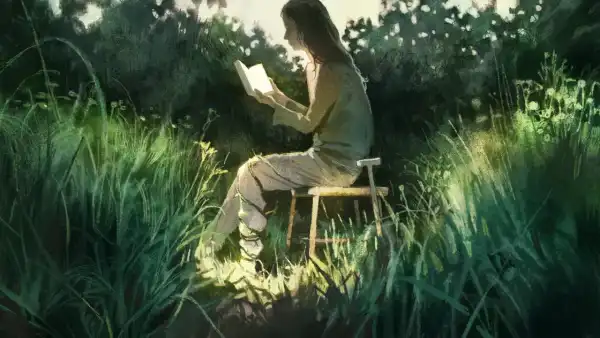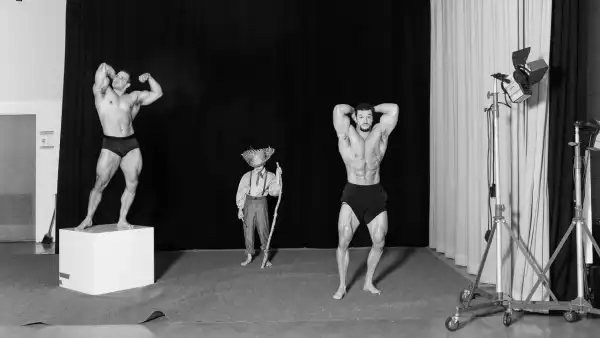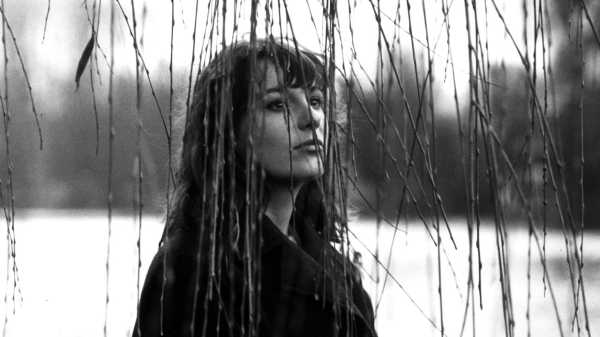
Save this storySave this storySave this storySave this story
From the nineteen-fifties through the seventies, short films were a national cottage industry in France. Their production was funded in part by the government’s official film-supporting bodies, both through direct subsidies and through the widespread practice of movie theatres showing shorts along with features. Almost all the major directors of the era made several short films en route to (and even during) their feature-film careers, and many of these shorts are prime entries in their bodies of work. I wrote recently of the urgency of getting and keeping hard copies—DVDs or Blu-rays—of films that one cherishes. This week, Icarus Films put out exactly the kind of release that should be snapped up for prolonged cherishing, a two-disk set titled “Early Short Films of the French New Wave,” which presents largely unfamiliar work of enduring power. (For viewers who prefer to stream, the films are also available on OVID.tv.)
These films, which were made between 1956 and 1966, were produced by Pierre Braunberger, who had made his name in the nineteen-twenties and thirties with films directed by Jean Renoir. Most of the shorts in the set are by celebrated directors working in styles different from the ones for which they’re famed. The set features a trio of films by Jean-Luc Godard (one co-directed by François Truffaut), two by Alain Resnais, one by Agnès Varda, and one by Jacques Rivette. Yet the five films that I consider mighty (albeit brief) masterworks come from less familiar filmmakers—or, in one case, a widely celebrated one in a surprising, unfamiliar context. They also show that the New Wave’s new cinematic styles and forms were far more than decorative delights—they were new ways of looking at private lives and at the world at large.
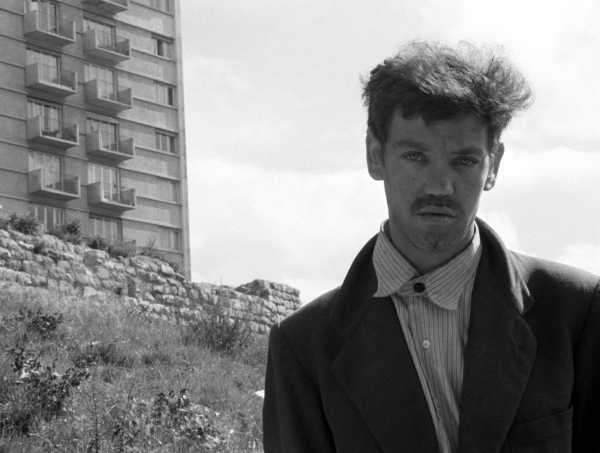
“500 Francs”
The 1961 film “500 Francs” is credited onscreen to a director calling himself only Melvin. He’s none other than Melvin Van Peebles. As a Black American filmmaker thwarted in his effort to make a career in Hollywood in the nineteen-fifties, he emigrated to the Netherlands, then moved to France. There he published novels and made this film, which he followed up with his first feature, “The Story of a Three-Day Pass”—simultaneously one of the best French and best American films of the sixties. “500 Francs” is, in effect, a silent film; Van Peebles wrote it, directed it, and did the music for it, and there’s no dialogue. The story involves a kid who sees a bill for the amount in question through a sewer grate and, hoping to fish it out, dangles his belt through the openings.
Though the dramatic stakes seem minor, Van Peebles distills the premise down to its essence—money and the need for it—and creates, in twelve minutes, a grim, grinding, even brutal panorama of poverty. The boy realizes that he needs something sticky, wants to get a gumball from a machine, has no coin to put in the slot, and tries in vain to steal one. (Instead, he ends up picking up from the gutter a spat-out wad of gum.) Soon the boy has competition: a grimy grownup who needs the money, too, and has experience and skill in getting it. The result is violence both real and symbolic, which (not to give away too much about the twelve minutes of action) shows us a society in which the poor are pitted against one another while the rich, remaining invulnerably above the fray, are able to ascribe the misfortunes of others to bad luck or even to the natural order. The film’s accusatory fury is matched by Van Peebles’s distinctive style, which distills the action into precise and sharp-edged compositions of high graphic design. The drama takes place in a gray city that, from a distance, seems like an oppressive monolith and, in closeup, is revealed as a crumbling wasteland. Such multilevel visual story sense would have been the envy of most of Van Peebles’s Hollywood counterparts.
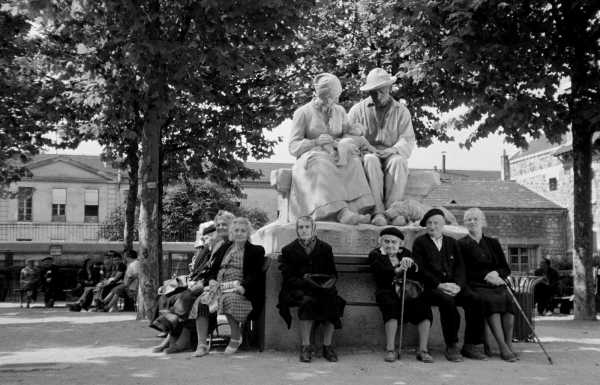
“Love Exists”
Poverty and a coldly indifferent social order are also the prime subjects of the writer and director Maurice Pialat’s documentary essay-film “Love Exists,” from 1961, the most accomplished and far-reaching work in the set. Starting from the workaday banality of bustling city streets, of crowds, trains, platforms, buses, and the cold frustration of traffic-clotted roads, Pialat unleashes an autobiographical story (spoken in voice-over by Jean-Loup Reynold) that amounts to a long-stifled cry of rage. He describes growing up in working-class Paris, which, though poor, had a level of vitality in its public life (open-air dances, movie theatres) and also proximity to nature. What he now finds there is not just economic deprivation but desperate neglect, a cultural void in which boredom fuels violence. Huge housing projects, which he likens to concentration camps, have imposed social segregation, while small private houses springing up in the area both heighten isolation and display petty comforts in delusional denial of their setting; some are right next to an airport, under deafening flight patterns. With journalistic indignation, Pialat shows the plight of immigrant laborers living tightly packed in shantytown firetraps close to posh Paris neighborhoods. He uses statistics to document such inequalities as the paucity of educational opportunities, but his catalogue of hardships, as the title hints, is as philosophical as it is sociological: it is a study in existential agony, progressing from foreclosed childhood to benumbed adulthood to retirement in the shadow of death. Visually, his jeremiad is amplified by candidly confrontational and stylistically probing images that match Antonioni in architectural diagnostics and foreshadow Godard’s “Alphaville” in techno-futuristic melancholy.
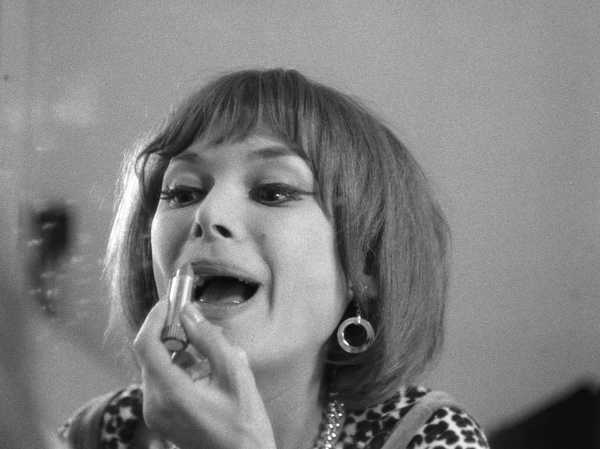
“Janine”
If love exists in such an environment, it’s a miracle. Pialat’s 1962 short fiction film, “Janine,” shows two men from such a stultifying environment who both endure and perpetuate its miseries. They’re both obsessed with the title character, played by Evelyne Ker, a single mother and a sex worker on the streets of Paris. One of her clients, Claude (Claude Berri, who also wrote the script—and would eventually become a commercially successful director), yearns to take her out on a regular date and dreams of getting married. Her ex, Hubert (Hubert Deschamps), who is her child’s father, can’t get Janine out of his mind. In his grimly depressive conversations during nocturnal wanderings with a sentimental, post-coital Claude, he denounces her and all women. Pialat delicately balances empathy for the men’s narrow lives with contempt for their moral sloth, giving his film the terse naturalism and the whiplash sting of an ironic, erotic short story by Maupassant.
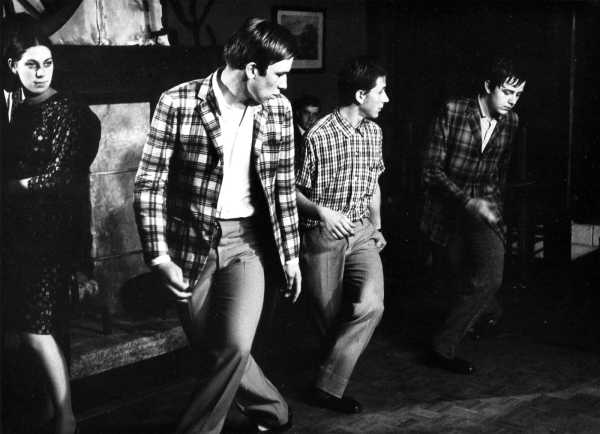
“The Fifteen-Year-Old Widows”
Pialat (who directed the first of his many features, “L’Enfance Nue,” in 1968) also figures, as an actor, in “The Fifteen-Year-Old Widows,” by Jean Rouch. Described in an opening title card as “an essay on adolescents in Paris in the summer of 1964,” the film is a drama built on a rich documentary substrate. A pioneer of such docu-fictions, Rouch casts two teen-agers, Marie-France de Chabaneix and Véronique Duval, as two girls (with the same first names as the actors) growing up in a milieu in which money is no object but is nonetheless a crucial subject. Both girls live in lavish houses in a fancy part of Paris, and Rouch, no less than Pialat in his impoverished suburb, wants to see whether love exists. Véronique is being raised by a single father, a busy businessman, and is the more adventurous of the pair; Marie-France, more pensive, lives with both her parents and the constant presence of her father’s best friend, Robert, whom she suspects of having an affair with her mother. The girls are in high school and they socialize with college boys, also from wealthy families, who manifest casual misogyny and the heedlessness of unquestioned privilege.
The seeming monotony of the girls’ lives is shattered when Véronique gets very drunk at a party and is raped. (Rouch doesn’t depict the event, merely suggesting it via a montage of still photos.) When Véronique tells Marie-France what happened, she never uses the word and gives no indication that she was victimized, or even that anyone did anything wrong. There is no mention of trauma either, but it’s central to the movie, as, afterward, Véronique’s perspectives on her friends and her life, and even her self, change drastically. So, in a different way, do Marie-France’s concerns, hopes, and plans. Pialat plays a fashion photographer who takes pictures of Véronique and questions her about sex and love, eliciting her bleak view of the adults around her and of the future that awaits her. His character is perhaps a stand-in for Rouch, who probed the apparent frivolity of emergent teen culture to explore the discontents that it embodied. (His 1962 short feature “The Punishment,” also on OVID.tv, portrays a high-school girl who, as a social experiment, submits to run-of-the-mill pickup routines and soon runs up against a city full of male predators.)
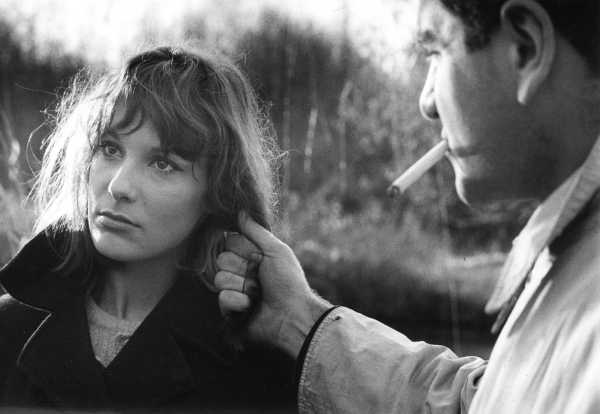
“The Botanical Avatar of Mademoiselle Flora”
Saving the best for last: the most astounding discovery in the two-disk set is another exploration of a woman’s life—romantic, emotional, and even metaphysical—this one written and directed by a female filmmaker: “The Botanical Avatar of Mademoiselle Flora,” from 1965. It’s directed by Jeanne Barbillon, whose career turns out to have been unfortunately scant, and it features the great Bernadette Lafont, who’d acted in a short by Truffaut and went on to star in his most unusual feature, “A Gorgeous Girl Like Me,” and also in Jean Eustache’s historic “The Mother and the Whore.” Lafont plays a woman named Flora, who reminisces about her forty-six-day cohabitation, in a provincial town, with a French soldier named Charles (Louis Mesuret). She unassumingly describes a tale of misery and frustration, with Charles on duty most of the day and often at night, leaving her with no money for even simple pleasures, tyrannically controlling her household expenditures, and otherwise either criticizing or ignoring her. Barbillon (working with the cinematographer Raoul Coutard, who’d revolutionized the craft with “Breathless”) films the breezy tragedy of small-scale incompatibility and large-scale despair in a series of wry vignettes that lead to a wondrous effect, a comic mask for ineffable horror. What happened to Barbillon, I can’t trace: she made one more short in the same year, then a TV movie in 1984, and, apparently, nothing more. Yet “Mademoiselle Flora” is the work of a filmmaker who, in her art and her ideas, is the peer of any in Braunberger’s exalted circle. The film’s availability is as much a cause for celebration as for bewilderment and bitter historical regret. ♦
Sourse: newyorker.com

